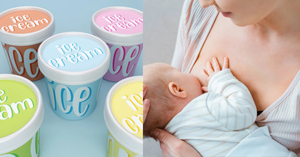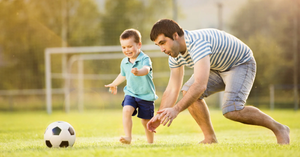Physical activity isn’t just about burning off steam. For kids, it’s a cornerstone of healthy development, impacting everything from physical well-being to cognitive function. But in today’s tech-driven world, getting kids to ditch the screens and embrace movement can be a challenge. So, why is staying active so crucial for children, and how can we make it a fun and engaging part of their lives?
The Science Behind Movement: Why Physical Activity Matters for Kids
Physical activity isn’t just a fun way to pass the time; it has a profound impact on a child’s physical and mental health. Here’s a glimpse into the science behind staying active:
- Stronger Bodies, Sharper Minds: Exercise strengthens growing bones and muscles, reducing the risk of obesity and chronic diseases later in life. But the benefits go beyond the physical. Studies show physical activity can improve cognitive function, memory, and academic performance.
- Boosting Mood and Reducing Stress: Physical activity is a natural mood elevator. Exercise releases endorphins, the body’s feel-good chemicals, leading to increased happiness and reduced stress levels. This can be especially helpful for children navigating the challenges of growing up.
- Building Healthy Habits: Encouraging physical activity from a young age helps children develop a lifelong love of movement. This sets the stage for healthy habits that continue into adulthood, promoting overall well-being.
Making Movement Fun: Practical Tips for Parents
Getting kids excited about exercise requires making it fun and engaging. Here are some practical tips to incorporate physical activity into your child’s daily routine:
- Embrace Playful Exploration: Young children learn best through play. Encourage active play at home and outdoors with toys like jump ropes, balls, and frisbees. Turn everyday tasks into adventures – chase bubbles while cleaning, or have a dance party while putting away laundry.
- Find the Right Fit: Not all kids enjoy the same activities. Explore different options like swimming, gymnastics, or dance classes until you find something your child truly enjoys. This fosters a sense of ownership and keeps them motivated.
- Get Active Together: Kids are more likely to embrace activities they see their parents enjoying. Make family game nights active, go for bike rides together, or take a hike on the weekend. Being a role model is a powerful motivator.
- Transform Screen Time: Limit screen time, but when screens are unavoidable, choose active video games that incorporate movement. Many educational apps encourage physical activity through interactive challenges.
- Make it a Celebration: Focus on the joy of movement, not just the physical benefits. Celebrate milestones, no matter how small, and reward effort over achievement. This helps keep the experience positive and motivating.
Small Changes, Big Impact: Building Active Routines
Encouraging an active lifestyle isn’t about drastic changes, but small, sustainable steps. Here are some ways to integrate physical activity seamlessly into your child’s day:
- Start Your Day Moving: Incorporate short bursts of activity in the morning, like a quick jog around the block or jumping jacks before breakfast. This sets the tone for an active day.
- Active Breaks Throughout the Day: Schedule short activity breaks between homework sessions or screen time. Take the stairs instead of the elevator, go for a walk around the block, or do some stretches.
- Active Transportation: Whenever possible, opt for active transportation. Walk or bike to school or errands, making it a family adventure.
- Turn Chores into Challenges: Transform chores into mini-competitions. See who can vacuum the fastest or race to put away laundry. This adds a fun twist to routine tasks.
Conclusion
By incorporating these tips and understanding the importance of physical activity, you can help your child develop a love of movement that sets them on the path to a healthy and happy life. Remember, it’s never too early (or too late!) to get your kids moving!








Be the first one to comment on this story.